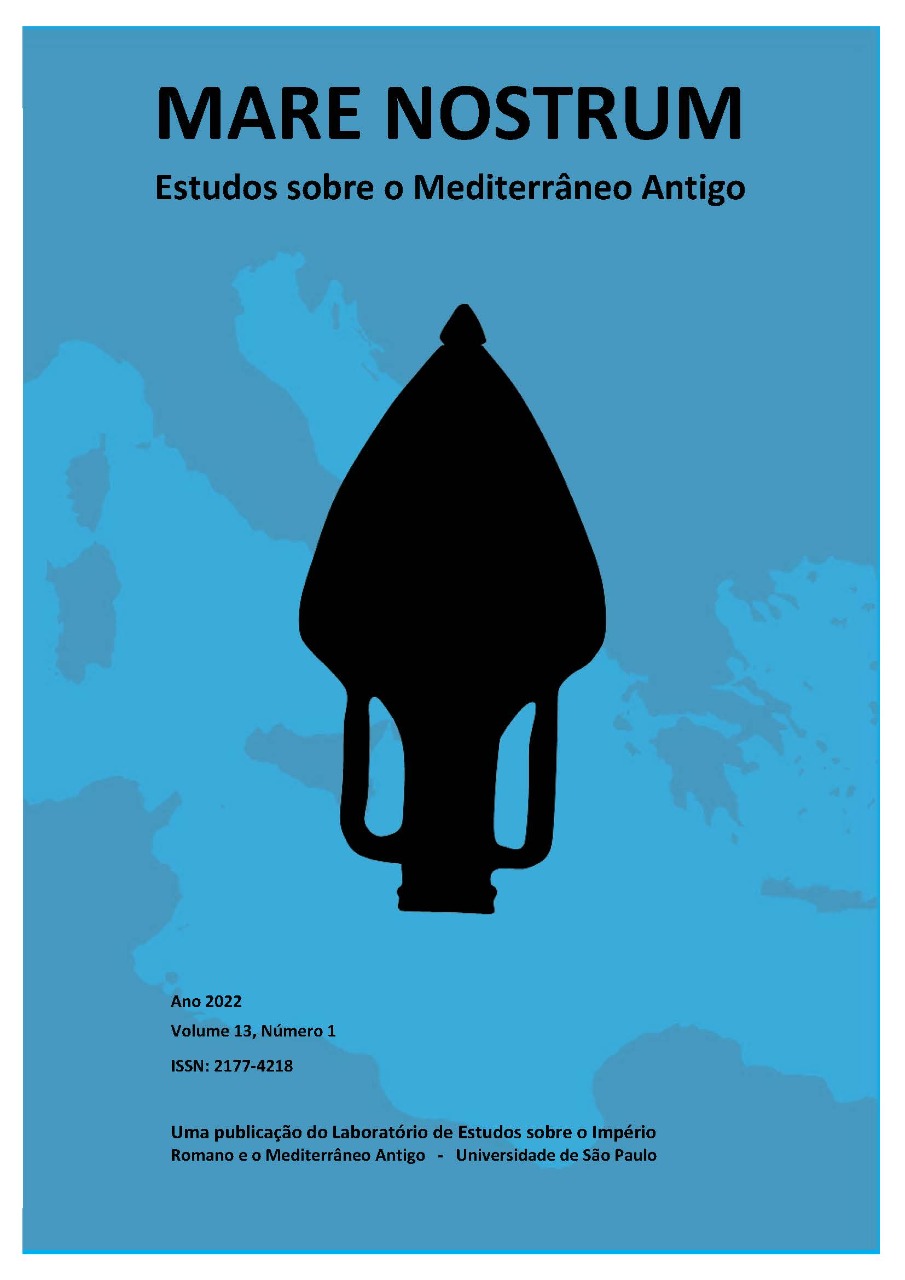Introdução ao Dossiê A Antiguidade do Nordeste Africano
DOI:
https://doi.org/10.11606/issn.2177-4218.v13i1p1-7Downloads
Referências
Manzo, A. (2017). “Architecture, Power, and Communication: Case Studies from Ancient Nubia”. African Archaeological Review 34 (1), p. 121–143. DOI: https://doi.org/10.1007/s10437-016-9239-6.
Gatto, M. C. (2019). “The Later Prehistory of Nubia in Its Interregional Setting”. In Handbook of Ancient Nubia, edited by D. Raue, p. 259–292. Berlin: De Gruyter.
Lemos, R. & Budka, J. (2021). Alternatives to colonization and marginal identities in New Kingdom colonial Nubia. World Archaeology, 53(3), p. 401–18.
Minor, E. (2018). Decolonizing Reisner: a case study of a Classic Kerma female burial for reinterpreting early Nubian archaeological collections through digital archival resources, in Nubian Archaeology in the XXIst Century, ed. Honegger, M. Leuven: Peeters, p. 251–62.
Moreno García, J.C. (2015). “The Cursed Discipline? The peculiarities of Egyptology at the turn of the Twenty-first century”. In Histories of Egyptology: Interdisciplinary Measures, edited by Carruthers, W., p. 50-63. New York: Routledge.
Smith, S.T. (2003). Wretched Kush: Ethnic identities and boundaries in the Egyptian Nubian empire. London: Routledge.
Smith. S.T. (2014). Gift of the Nile? Climate Change, the Origins of Egyptian Civilization and Its Interactions within Northeast Africa. In Across the Mediterranean – Along the Nile: Studies in Egyptology, Nubiology and Late Antiquity Dedicated to László Török on the Occasion of His 75th Birthday, Vol. 1, eds. T. A. Bács, Á. Bollók and T. Vida, 325–345. Budapest: Hugarian Academy of Sciences.
Wengrow, D., Dee, M., Foster, S., Stevenson, A. & Ramsey, C.B. (2014). “Cultural convergence in the Neolithic of the Nile Valley: a prehistoric perspective on Egypt's place in Africa”. Antiquity, 88, p. 95–111.
Wengrow, D. (2010). What makes civilization? The Ancient Near East and the future of the West. Oxford: Oxford University Press.
Wengrow, D. (2003). “Landscapes of Knowledge, Idioms of Power: The African Foundations of Ancient Egyptian Civilization Reconsidered”. In Ancient Egypt in Africa, edited by Andrew Reid and David O’Connor, p. 121–135. Routledge.
Köhler, Christiana (2010). Theories of State Formation, in: W. Wendrich (ed.), Egyptian Archaeology. Oxford: Willey-Blackwell, p. 36-54.
Carruthers, W. (2020b). Archaeological (non?) alignments: Egypt, India, and global geographies of the post-war past. South Asian Studies, 36(1), p. 45–60.
Downloads
Publicado
Edição
Seção
Licença
Copyright (c) 2022 Fábio Frizzo, Maria Thereza David João, Rennan Lemos

Este trabalho está licenciado sob uma licença Creative Commons Attribution 4.0 International License.
Os conteúdos expressos nos textos publicados pela Mare Nostrum são de exclusiva responsabilidade de seus respectivos autores.
A reprodução dos textos editados pela Mare Nostrum é permitida sob licença Creative Commons, Atribuição-NãoComercial (CC BY-NC).
Autores que publicam nesta revista concordam com os seguintes termos:
- Autores mantém os direitos autorais e concedem à revista o direito de primeira publicação, com o trabalho simultaneamente licenciado sob a Licença Creative Commons Attribution que permite o compartilhamento do trabalho com reconhecimento da autoria e publicação inicial nesta revista.
- Autores têm autorização para assumir contratos adicionais separadamente, para distribuição não-exclusiva da versão do trabalho publicada nesta revista (ex.: publicar em repositório institucional ou como capítulo de livro), com reconhecimento de autoria e publicação inicial nesta revista.
- Autores têm permissão e são estimulados a publicar e distribuir seu trabalho online (ex.: em repositórios institucionais ou na sua página pessoal) a qualquer ponto antes ou durante o processo editorial, já que isso pode gerar alterações produtivas, bem como aumentar o impacto e a citação do trabalho publicado (Veja O Efeito do Acesso Livre).









